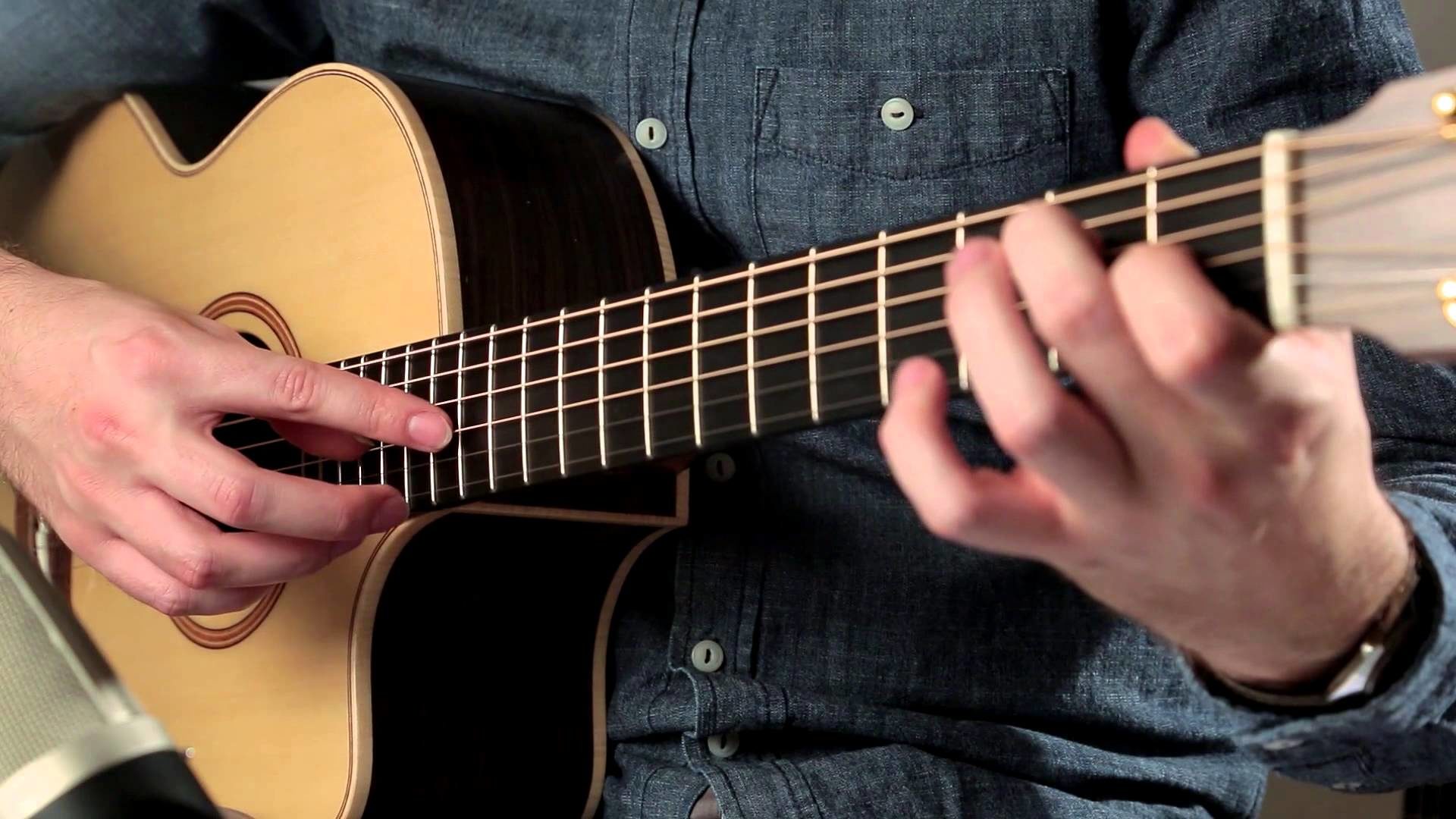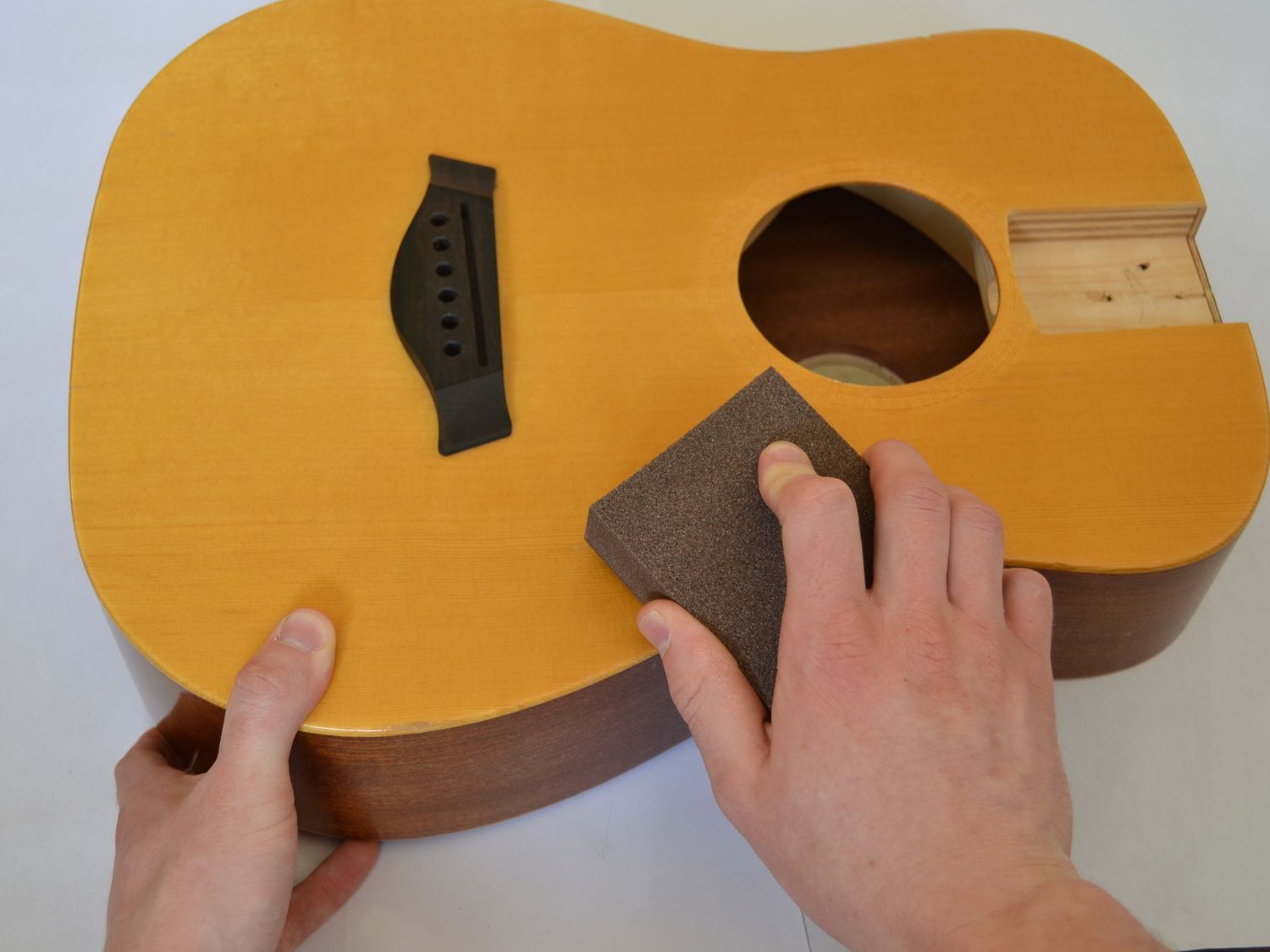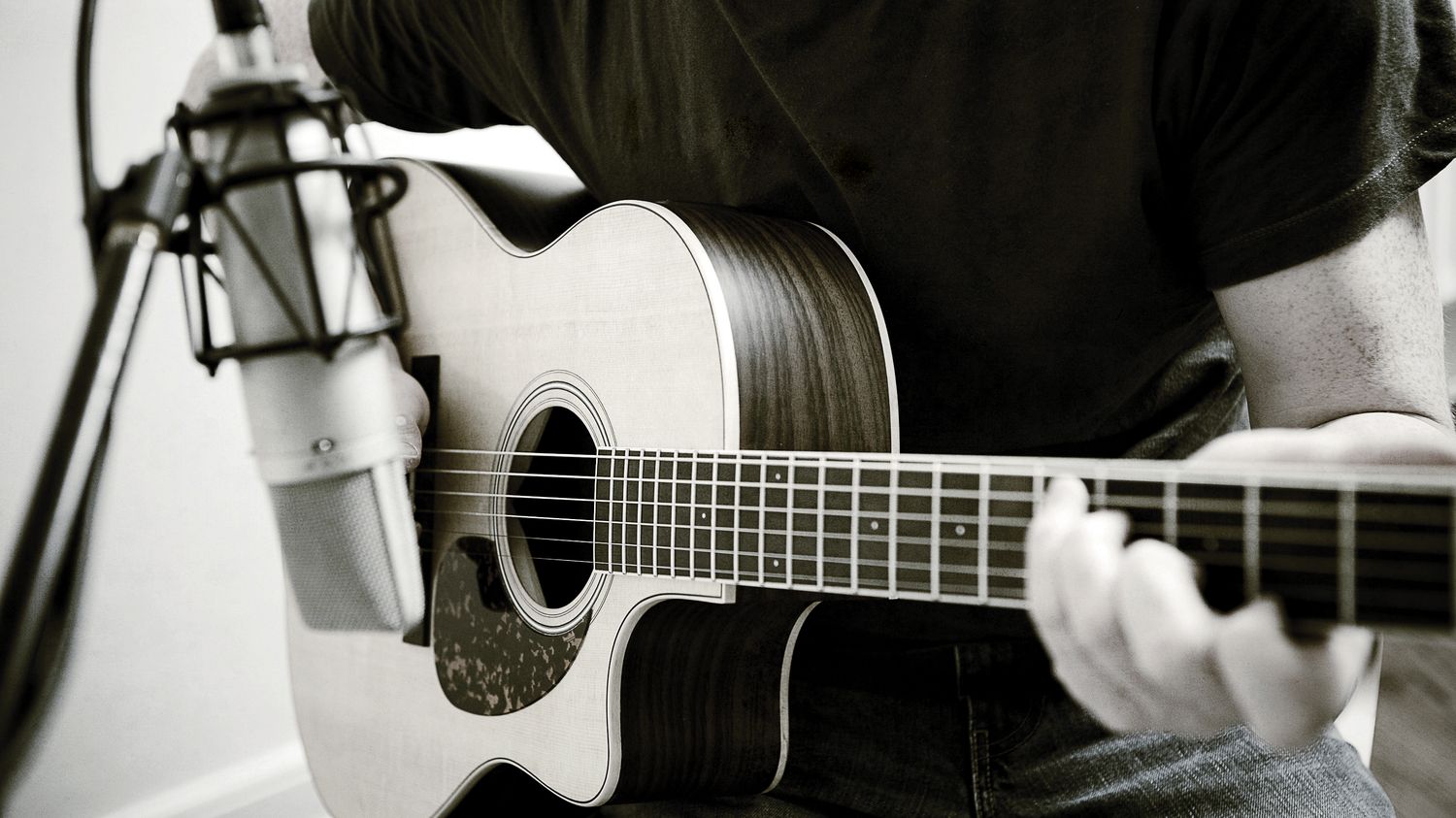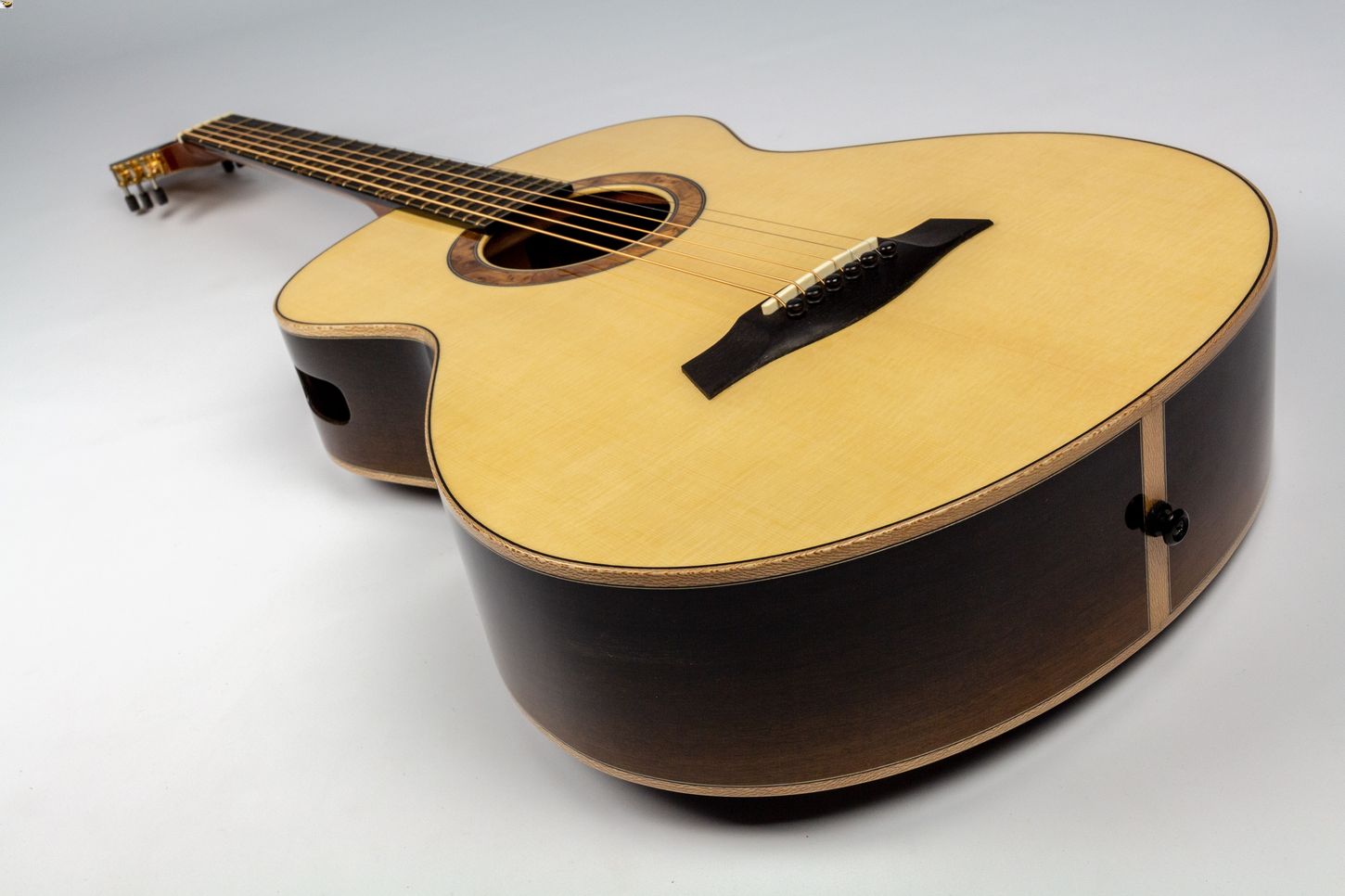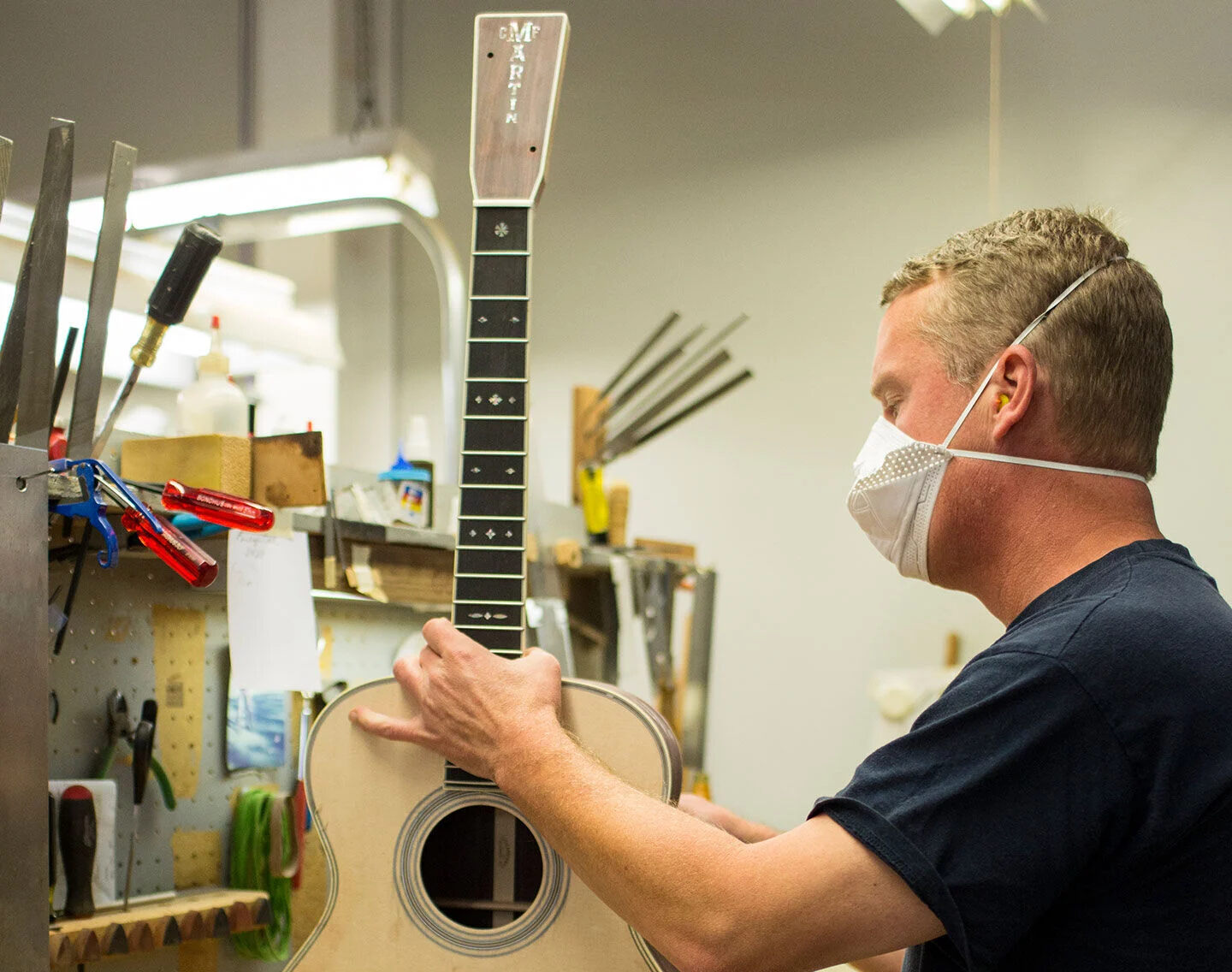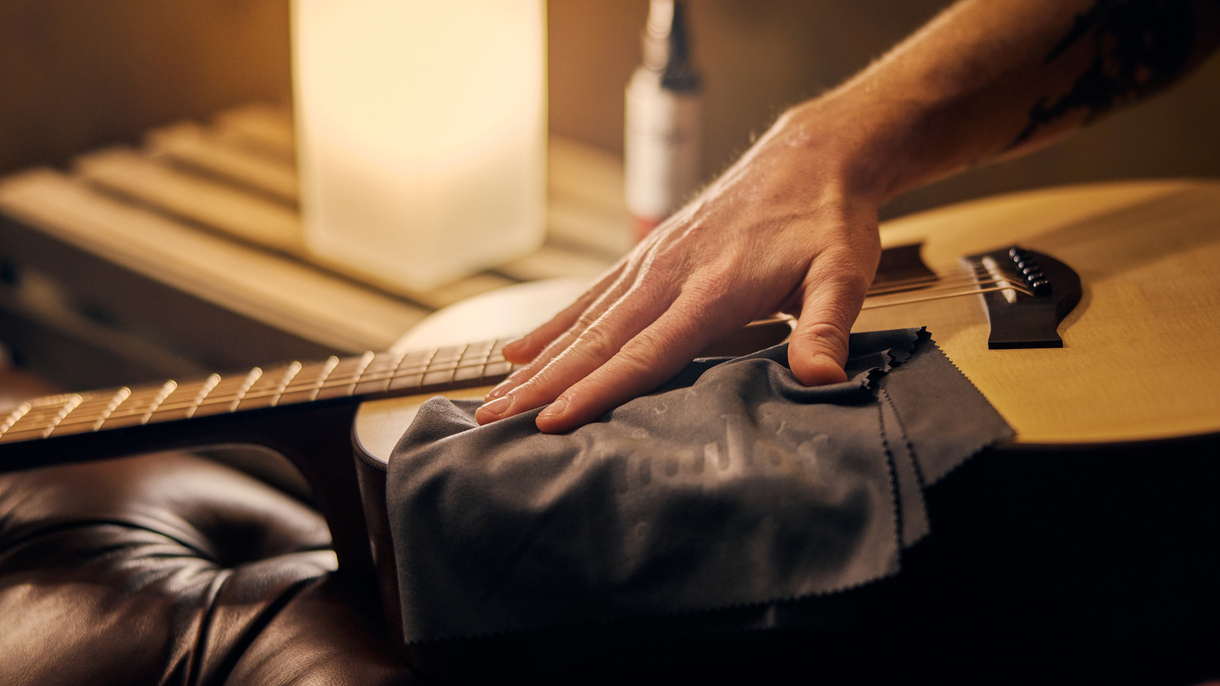Home>Production & Technology>Acoustic>How To Build An Acoustic Guitar
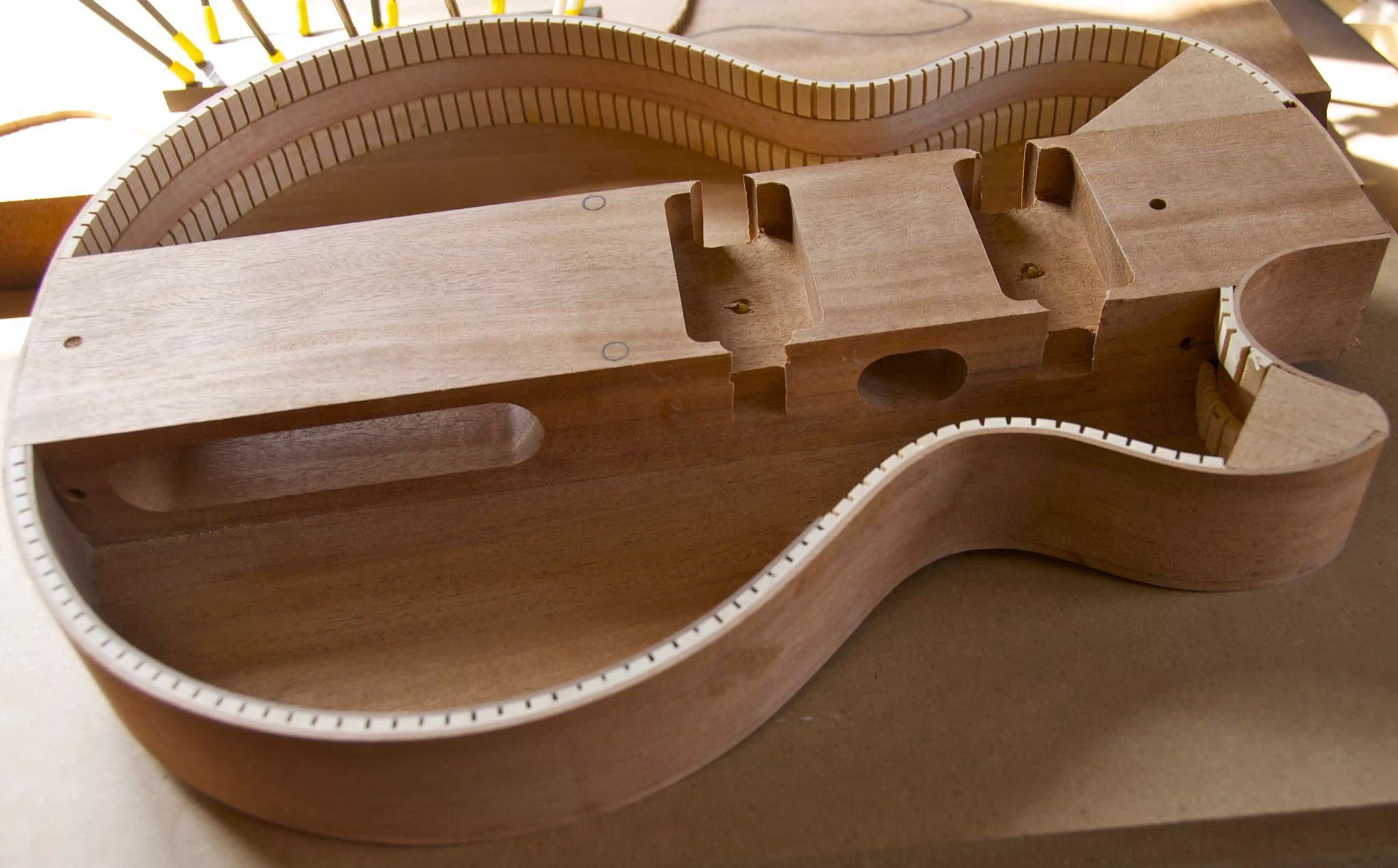

Acoustic
How To Build An Acoustic Guitar
Published: March 12, 2024
Learn how to build an acoustic guitar from scratch with our comprehensive guide. Discover the essential steps and techniques for crafting your own beautiful instrument.
(Many of the links in this article redirect to a specific reviewed product. Your purchase of these products through affiliate links helps to generate commission for AudioLover.com, at no extra cost. Learn more)
Table of Contents
Introduction
Building an acoustic guitar is a labor of love that combines craftsmanship, artistry, and a deep understanding of acoustics. It's a journey that begins with selecting the finest materials and culminates in the creation of a musical instrument that resonates with soul-stirring melodies. Whether you're a seasoned luthier or a novice craftsman, the process of building an acoustic guitar is a deeply rewarding endeavor that allows you to channel your creativity and passion into a tangible work of art.
The art of guitar making dates back centuries, with each instrument bearing the unique imprint of its creator. From the choice of tonewoods to the intricacies of bracing patterns, every decision made in the construction process influences the instrument's tone, resonance, and playability. As you embark on this journey, you'll delve into the rich tapestry of acoustic guitar construction, learning the nuances of shaping, carving, and assembling each component with precision and care.
Crafting an acoustic guitar is not merely a technical pursuit; it's a harmonious blend of science and art. Understanding the principles of acoustics and how they intersect with the physical properties of wood is essential in creating an instrument that produces rich, balanced tones. From the resonance of the soundboard to the stability of the neck, every element plays a crucial role in shaping the guitar's sonic character.
Throughout this guide, we'll explore the intricate steps involved in building an acoustic guitar, from selecting the right materials to fine-tuning the instrument for optimal playability and tonal quality. Whether you're drawn to the allure of creating a custom instrument or seeking a deeper connection with the music you create, the journey of building an acoustic guitar is a testament to the enduring craftsmanship and artistry that defines this timeless instrument.
Choosing the Right Materials
Selecting the right materials is the foundational step in building an acoustic guitar. The choice of tonewoods significantly influences the instrument's tone, resonance, and overall aesthetic. Here's a detailed look at the key materials involved in crafting an acoustic guitar:
Soundboard:
The soundboard, also known as the top, is one of the most critical components of an acoustic guitar. It is responsible for transmitting the vibrations of the strings and resonating to produce sound. Spruce and cedar are popular choices for soundboard material due to their excellent strength-to-weight ratio and tonal properties. Spruce is favored for its clarity and projection, while cedar offers a warmer, more nuanced tone.
Back and Sides:
The back and sides of the guitar contribute to its tonal characteristics and visual appeal. Rosewood, mahogany, and maple are commonly used for their distinct tonal qualities. Rosewood is prized for its rich, deep lows and sparkling highs, while mahogany offers a balanced, midrange-focused sound. Maple is revered for its clarity and bright tonal profile.
Neck and Fingerboard:
The neck and fingerboard play a crucial role in the playability and stability of the guitar. Mahogany and maple are popular choices for neck construction, offering durability and resonance. For the fingerboard, ebony and rosewood are preferred for their smooth texture and tonal richness.
Bracing:
Internal bracing reinforces the soundboard and influences the guitar's structural integrity and tonal response. Sitka spruce and Adirondack spruce are commonly used for bracing due to their strength and resonance, enhancing the soundboard's ability to vibrate freely while providing structural support.
Binding and Purfling:
Binding and purfling serve both functional and decorative purposes, providing structural reinforcement and adding aesthetic flair to the guitar's edges. Materials such as maple, rosewood, and ivoroid are often used for binding and purfling, complementing the overall design of the instrument.
Nut and Saddle:
The nut and saddle, typically crafted from bone or synthetic materials, directly impact the guitar's intonation and sustain. These components play a crucial role in transmitting string vibrations to the soundboard, contributing to the instrument's overall tonal clarity and balance.
In the art of guitar making, the selection of materials is a deeply personal and nuanced process, with each tonewood and component contributing to the instrument's sonic identity. By carefully considering the tonal characteristics, structural properties, and visual aesthetics of each material, luthiers and guitar builders can create instruments that resonate with exceptional tonal depth and visual allure.
Designing the Guitar Body
The design of the guitar body is a pivotal aspect of acoustic guitar construction, shaping the instrument's tonal characteristics and visual appeal. From the iconic curves of the upper bout to the graceful contours of the waist and lower bout, the body design plays a crucial role in defining the guitar's resonance, projection, and ergonomic comfort for the player.
Body Shape and Size
The choice of body shape and size profoundly influences the guitar's tonal profile and playing experience. Popular body styles such as dreadnought, concert, and parlor guitars each offer distinct tonal characteristics and ergonomic considerations. The dreadnought, known for its bold projection and robust bass response, is favored for its versatility across various playing styles. Concert guitars, with their balanced tonal spectrum and comfortable size, cater to fingerstyle players and those seeking a more intimate playing experience. Parlor guitars, cherished for their vintage charm and focused midrange, provide a compact, lightweight option for musicians on the go.
Soundhole Design
The soundhole serves as a portal for the guitar's sound to project and resonate. Its size, shape, and placement significantly impact the instrument's tonal balance and projection. Traditional round soundholes offer a classic aesthetic and balanced tonal response, while alternative designs such as f-holes and rosettes can impart unique visual flair and tonal nuances.
Top Bracing Patterns
The bracing pattern on the soundboard is a critical element in shaping the guitar's tonal character and structural integrity. From the iconic X-bracing to variations like fan bracing and lattice bracing, each pattern influences the soundboard's flexibility, responsiveness, and tonal emphasis. X-bracing, renowned for its balance of strength and resonance, is a staple in many acoustic guitar designs, providing stability while allowing the soundboard to vibrate freely. Fan bracing, commonly found in classical guitars, offers a nuanced tonal palette and a more delicate responsiveness, ideal for intricate fingerstyle playing.
Cutaway Design
For guitars designed to accommodate upper fret access, the inclusion of a cutaway in the body design enhances playability and expands the guitarist's reach to higher notes. Whether in the form of a Venetian cutaway with its rounded profile or a sharper Florentine cutaway, this design element adds a modern touch to the guitar's aesthetic while facilitating effortless access to the upper frets.
Body Binding and Inlays
Binding and inlays not only provide structural reinforcement but also contribute to the guitar's visual allure. Whether crafted from contrasting wood, abalone, or other decorative materials, these elements frame the guitar's body, adding a touch of elegance and individuality to the instrument's overall design.
In the art of designing the guitar body, luthiers and guitar builders carefully consider these elements to create instruments that resonate with exceptional tonal depth and visual allure. Each design choice reflects a harmonious balance of tradition, innovation, and artistic expression, resulting in acoustic guitars that inspire and captivate musicians and enthusiasts alike.
Constructing the Neck and Headstock
The construction of the neck and headstock is a meticulous process that demands precision, structural integrity, and aesthetic finesse. As the central axis of the guitar, the neck plays a pivotal role in providing stability, facilitating comfortable playability, and transmitting string vibrations to the body for optimal resonance. Meanwhile, the headstock not only serves as a platform for tuning mechanisms but also contributes to the instrument's visual identity.
Neck Construction
Crafting the neck begins with selecting high-quality tonewoods renowned for their strength, stability, and resonance. Mahogany and maple are popular choices due to their durability and tonal properties. The neck blank is carefully shaped to achieve the desired profile, balancing ergonomic comfort for the player with structural robustness. The addition of a truss rod, typically made of steel, reinforces the neck's ability to withstand string tension while allowing for precise adjustments to maintain optimal playability.
Headstock Design
The headstock, often regarded as the guitar's crowning feature, presents an opportunity for artistic expression and functional design. Whether crafting a classic slotted headstock or a modern solid headstock, luthiers meticulously shape the headstock to complement the instrument's overall aesthetic. The choice of headstock angle and shape not only influences tuning stability but also contributes to the guitar's visual allure. Additionally, the installation of tuning machines, also known as tuners or tuning pegs, demands meticulous attention to detail to ensure smooth, reliable tuning performance.
Fretboard Installation
The fretboard, typically made of ebony or rosewood, is carefully installed onto the neck, providing a smooth playing surface for the guitarist. Precise fret slotting and installation are essential to ensure accurate intonation and comfortable playability across the entire fretboard. The frets themselves, often made of nickel-silver, are meticulously seated, leveled, and dressed to guarantee uniform height and optimal playability.
Inlay and Binding
Inlay work on the fretboard and headstock presents an opportunity for intricate artistic expression, with materials such as mother-of-pearl, abalone, and exotic woods adding a touch of elegance and individuality to the instrument. Binding, whether in the form of contrasting wood or decorative purfling, frames the fretboard and headstock, enhancing their visual appeal while providing structural reinforcement.
The construction of the neck and headstock is a testament to the luthier's skill and attention to detail, with each component meticulously crafted to harmonize structural integrity, playability, and visual allure. The result is a neck and headstock that not only provide a stable foundation for the guitar but also embody the artistry and craftsmanship that define the instrument's timeless appeal.
Assembling the Guitar
Assembling the guitar marks the culmination of meticulous craftsmanship and precision, bringing together the individual components to create a harmonious, resonant instrument. This stage requires a keen eye for detail, a steady hand, and a deep understanding of how each element contributes to the guitar's overall tone, playability, and aesthetic appeal.
The assembly process begins with the careful attachment of the neck to the body, ensuring a seamless and stable connection. The dovetail joint, a traditional method of neck attachment, provides optimal transfer of vibrations from the neck to the body, enhancing the instrument's resonance. Alternatively, bolt-on neck construction offers ease of assembly and adjustment, catering to modern manufacturing practices while maintaining structural integrity.
Next, the installation of the bridge and saddle is a critical step that directly influences the guitar's intonation, string action, and tonal characteristics. The bridge must be precisely positioned to achieve the correct scale length and alignment with the fretboard, facilitating accurate intonation across the entire fretboard. The saddle, often crafted from bone or synthetic materials, plays a crucial role in transmitting string vibrations to the soundboard, contributing to the instrument's tonal clarity and balance.
Stringing the guitar with high-quality acoustic strings is a moment of anticipation and excitement, as the instrument begins to come to life. Each string is carefully secured to the bridge and then wound onto the tuning pegs, with precise tension and tuning stability being paramount. As the strings are brought to pitch, the guitar's resonance begins to emerge, offering a glimpse of the instrument's sonic potential.
The final adjustments and setup of the guitar are essential to ensure optimal playability and tonal performance. This involves fine-tuning the truss rod to achieve the desired neck relief, adjusting the string action at the nut and saddle for comfortable playability, and meticulously setting the intonation to guarantee accurate pitch across the fretboard. Additionally, the nut and saddle may be carefully shaped and polished to optimize string contact and sustain.
As the guitar is meticulously assembled and fine-tuned, each component harmonizes to create a musical instrument that embodies the luthier's dedication and expertise. The culmination of this process is not merely the creation of a guitar but the birth of an instrument that resonates with soul-stirring melodies and inspires musicians to embark on musical journeys filled with creativity and expression.
Finishing Touches
The final stage of building an acoustic guitar encompasses the meticulous art of applying finishing touches, a process that elevates the instrument from a collection of components to a singular, resonant masterpiece. This transformative phase demands a delicate balance of precision, artistry, and expertise, as each detail contributes to the guitar's visual allure, tonal refinement, and long-term durability.
The application of the finish serves as a protective shield, safeguarding the guitar's tonewoods while enhancing their natural beauty. Whether opting for a traditional hand-rubbed oil finish, a lustrous nitrocellulose lacquer, or a resilient polyurethane coating, luthiers and guitar builders meticulously apply the finish to achieve a flawless, mirror-like surface. The careful sanding, polishing, and buffing of the finish result in a lustrous sheen that accentuates the unique grain patterns and colors of the tonewoods, adding a touch of elegance to the instrument's visual presentation.
Beyond its aesthetic impact, the finish also plays a crucial role in shaping the guitar's tonal characteristics. The thin film of finish atop the soundboard and body influences the instrument's resonance, sustain, and tonal projection. Luthiers carefully consider the impact of the finish on the guitar's sonic properties, striving to achieve a balance that preserves the tonal clarity and responsiveness of the tonewoods while providing adequate protection against environmental factors.
In addition to the finish, the installation of hardware and final setup adjustments are essential components of the finishing touches. From the installation of tuning machines and fretboard markers to the meticulous adjustment of the nut and saddle, each detail contributes to the guitar's playability, tuning stability, and overall functionality. The careful attention to detail during this stage ensures that the guitar not only looks exquisite but also performs at its optimal potential, inspiring musicians with its effortless playability and resonant tonal character.
The finishing touches represent the culmination of the luthier's artistry and dedication, transforming raw materials into a refined, resonant instrument that embodies the timeless craft of guitar making. As the final strokes are applied and the last adjustments are made, the guitar emerges as a testament to the enduring tradition of craftsmanship, ready to inspire musicians and enthusiasts with its visual allure, tonal depth, and the promise of musical journeys yet to unfold.
Conclusion
The art of building an acoustic guitar is a testament to the enduring craftsmanship and artistry that defines this timeless instrument. From the meticulous selection of tonewoods to the intricate shaping of the guitar body, the construction process embodies a harmonious blend of tradition, innovation, and creative expression. Each step in the journey of guitar making reflects a deep understanding of acoustics, a reverence for the inherent qualities of wood, and a commitment to creating instruments that resonate with exceptional tonal depth and visual allure.
As luthiers and guitar builders embark on the journey of crafting an acoustic guitar, they immerse themselves in a world where science and art converge, where every decision made influences the instrument's sonic character and aesthetic appeal. The careful consideration of materials, body design, neck construction, and assembly culminates in the creation of a musical instrument that transcends its physical form, resonating with soul-stirring melodies and inspiring musicians to embark on creative musical journeys.
The process of building an acoustic guitar is not merely a technical pursuit; it is a labor of love that demands patience, precision, and a deep appreciation for the transformative power of music. As the final finishing touches are applied, the guitar emerges as a singular, resonant masterpiece, embodying the luthier's dedication and expertise. It stands as a testament to the enduring tradition of craftsmanship, ready to inspire musicians and enthusiasts with its visual allure, tonal depth, and the promise of musical journeys yet to unfold.
In the hands of musicians, these handcrafted instruments become vessels of expression, each note resonating with the legacy of craftsmanship and the spirit of creativity. The journey of building an acoustic guitar is a testament to the enduring allure of this timeless instrument, a celebration of the artistry, dedication, and passion that define the craft of guitar making. As these instruments find their way into the hands of musicians, they become more than mere objects; they become conduits of emotion, creativity, and the universal language of music.


